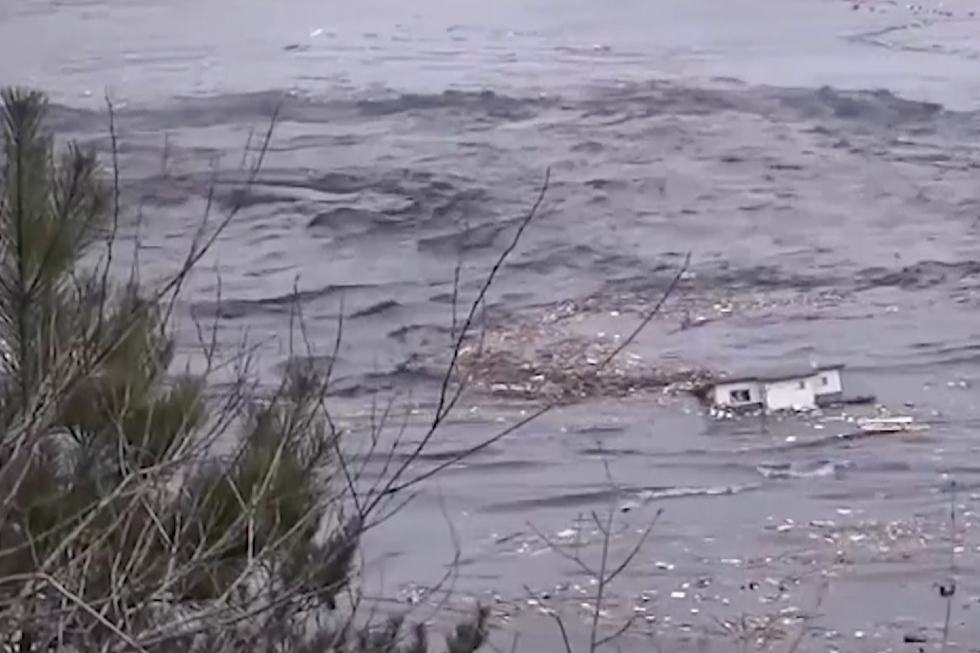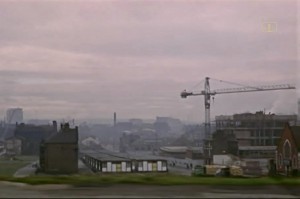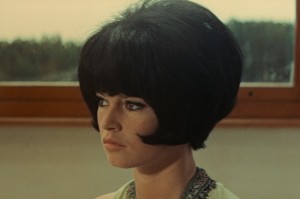Taking Stock Of Disaster:
The Earth Asleep – Reviewed

“Rolling news is a background horror.” Lucy Holt reviews The Earth Asleep, a new film which lays bare the news cycle’s impact on reconciling trauma and grief…
The thing you realise about rolling news is that it’s exactly that: a background horror, a low horrendous hum against which we live our daily lives. That it never stops or starts allows us to become acclimated to its unfurling atrocities. It is often only when we revisit these images, with the fresh eyes of distance, that we can begin to reckon with them.
This is strikingly obvious in Clara Casian’s new film The Earth Asleep. Commissioned by HOME in Manchester, with an original score by Dutch Uncles’ Robin Richards, it is a film concerned with taking stock, even if that seems an impossible task. It’s also a film about the distance of time; what it heals and what it doesn’t. Healing might not even be the right word for what this is.
Casian, a Romanian artist and filmmaker, travelled to the village of Otsuchi in Japan’s remote North East, to speak to those who live among the ruins in the aftermath of 2011’s Fukushima nuclear disaster, caused by a major earthquake, and subsequent 15-metre tsunami. There, Casian interviews people who experienced the wave rip through their village. She surveys the surrounding landscape, which is part lush forest, part expansive sand flat. Her camera dwells on pond wildlife, a spider’s web, the gentle swell of a coastal bay. There is much to take stock of that is living, but as soon as the camera pans out, encompasses human-built structures or the spaces where they may once have stood, we realise that images of somewhere like Otsuchi, innocuous as they may be, are destined to always be heavy with threat. At one point we see a lighthouse on the rocks, and we know that danger is not a metaphor.
The film comprises, in the main, rolling news footage. Here, that means the sweeping of the tsunami wave across the land, captured on smartphones by eye-witnesses. The pictures look unearthly as great swells of water carry entire houses further inland. They feel even more alien now. Ten years is enough time for someone to pass from childhood or early adolescence into full adulthood; for the horror of those images to fully sink in, with clear eyes and a deeper understanding of the world. For instance, I do not remember watching the images of the sea water rolling through villages and being able to spot dark, unmistakable swirls of red. I wonder if I didn’t understand the images, or have misremembered them. There is another, more selfish thing at play here too, from a Western perspective. Ten years ago, a natural disaster on the other side of the world felt like a distant horror. In the years since, climate-related catastrophes have become more frequent, more severe. They are not merely something that happens elsewhere.
Increasingly, images of disaster conjure images of other disasters: a grim greatest hits. You can’t see the news footage of the Japanese tsunami and not think of the Indian Ocean Boxing Day tsunami (2004), which in-turn invokes images of 9/11. That we live in an era of continuous news and personal surveillance means there exists an internal apocalypse archive. Casian and Richards are well aware of the potency of these connected images. Their previous collaboration, Birdsong – Stories from Pripyat, is about memories of the Chernobyl nuclear disaster, another one of those collectively filed meta-disasters. There is a disclaimer at the beginning of this film, The Earth Asleep, that the images of victims who perished shown were chosen at random, and stand for all victims, of all disasters, natural or otherwise.
The interviewed survivors are quiet in their grief. One woman tells a story of how, as the tidal wave ripped through the village, she drove up to the school, on higher ground, to find her daughter at the evacuation point there. She credits this action, with a deep sense of guilt, as what saved her when others perished. Another man, older, recalls stripping the destroyed houses of timber to build fires in the immediate aftermath of the disaster. These individual stories feel like exactly that, individual strands, against the vast impossibility of a disaster in triplicate.
There is a disconnect between these individual recollections, and a collective global recollection. As viewers we might be expecting something more cathartic, all encompassing. Instead, what we find is small stories of specific, desperate grief. We learn that people stopped talking to each other in the immediate aftermath. We remember that ten years isn’t a very long time at all. The word ‘decade’ feels falsely grandiose. Ten years can be nothing, or certainly not long enough to process the very worst thing that could happen to a community three times over, and that in a series of minute ways, things go on.
Casian has carved out visual spaces for reflection in this film. Her background as an artist is clear, as she brings into frame Hokusai’s Great Wave, an ambiguous bubbling pool of water. Maria M Casian is credited with writing the lengthy narrative poem, dispersed visually throughout the entirety of the film, from which it takes its name. Richards’ score is sparse and synth-led, but never melancholy. Instead, it is intimate and unsettling, playing against the unearthliness of the images. There is no need for a soundtrack to hold our hand through emotional denouements, and the music is restrained at these points, allowing for quiet complexities to bed in.
Even before the pandemic, our news climate was one of total immediacy. It is a vital exercise to revisit and take stock. Sometimes we discover uncomfortable un-resolutions: that things have not been rebuilt, that the threat has not been dispelled. In The Earth Asleep, Casian and Richards do not show us new images, do not tell us uniquely spectacular stories, but instead they confront that endless hum which has desensitised us as a global audience. It is a film to watch, fully and wholly. You simply must watch it.
Lucy Holt
The Earth Asleep premieres at Home Manchester with a live score in September and is available to stream now on BFI Player





